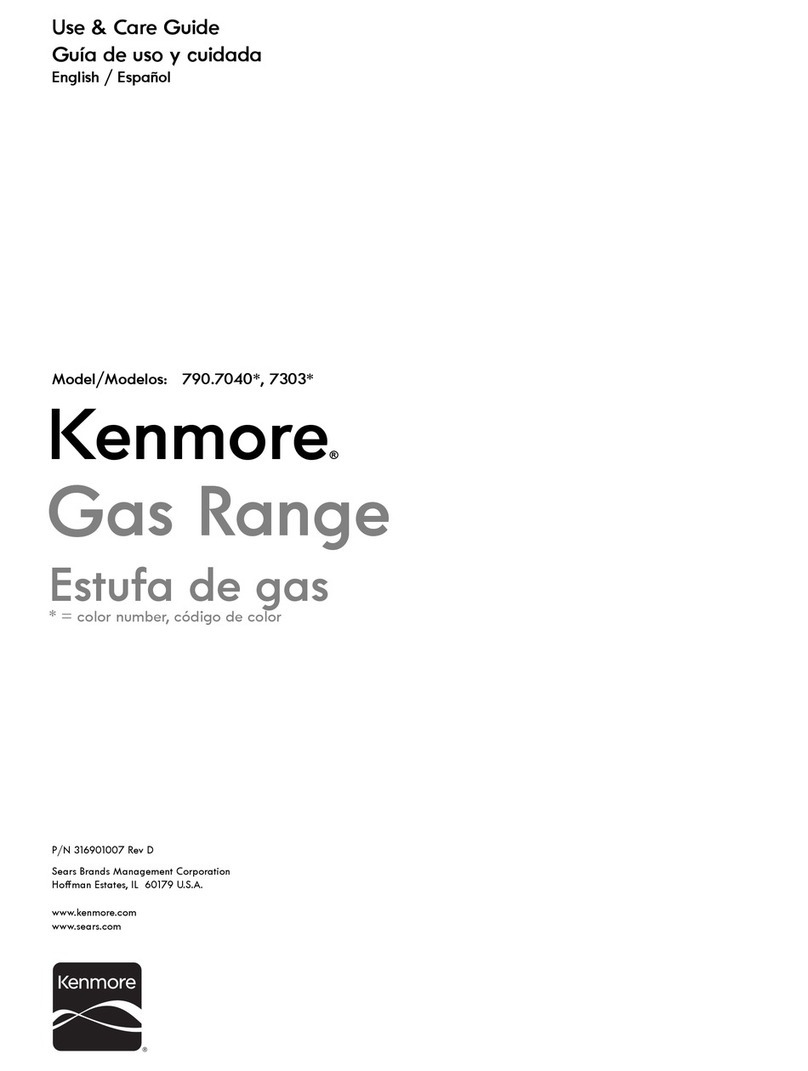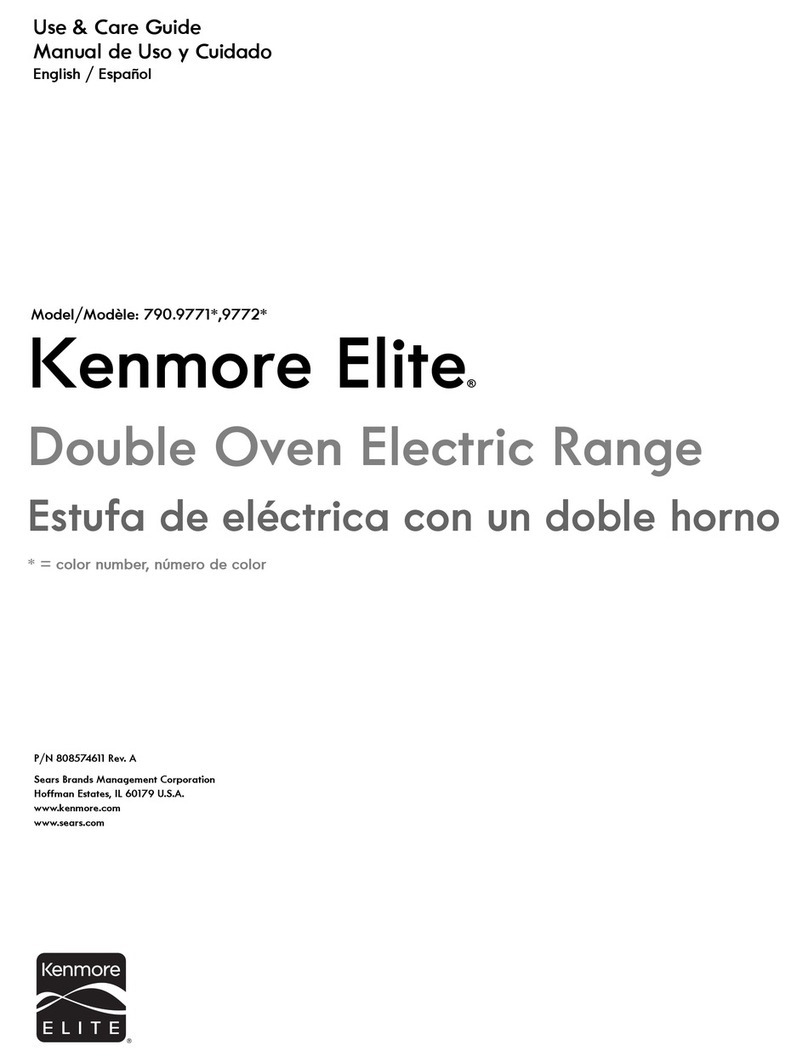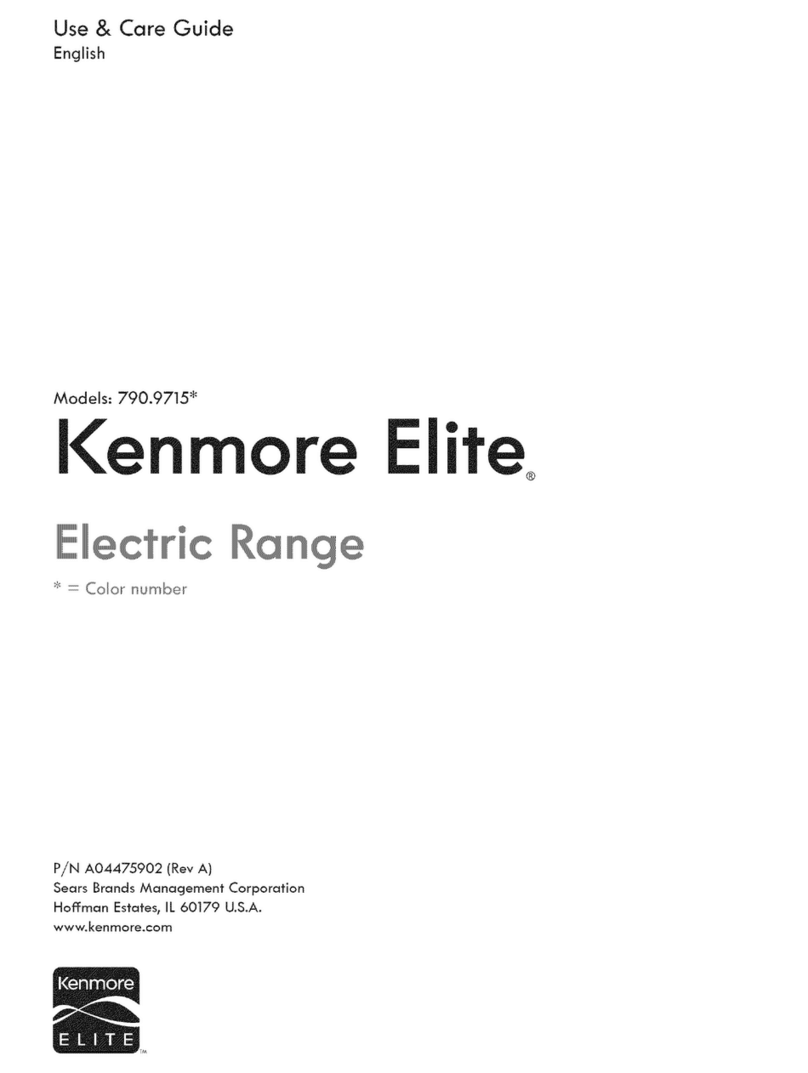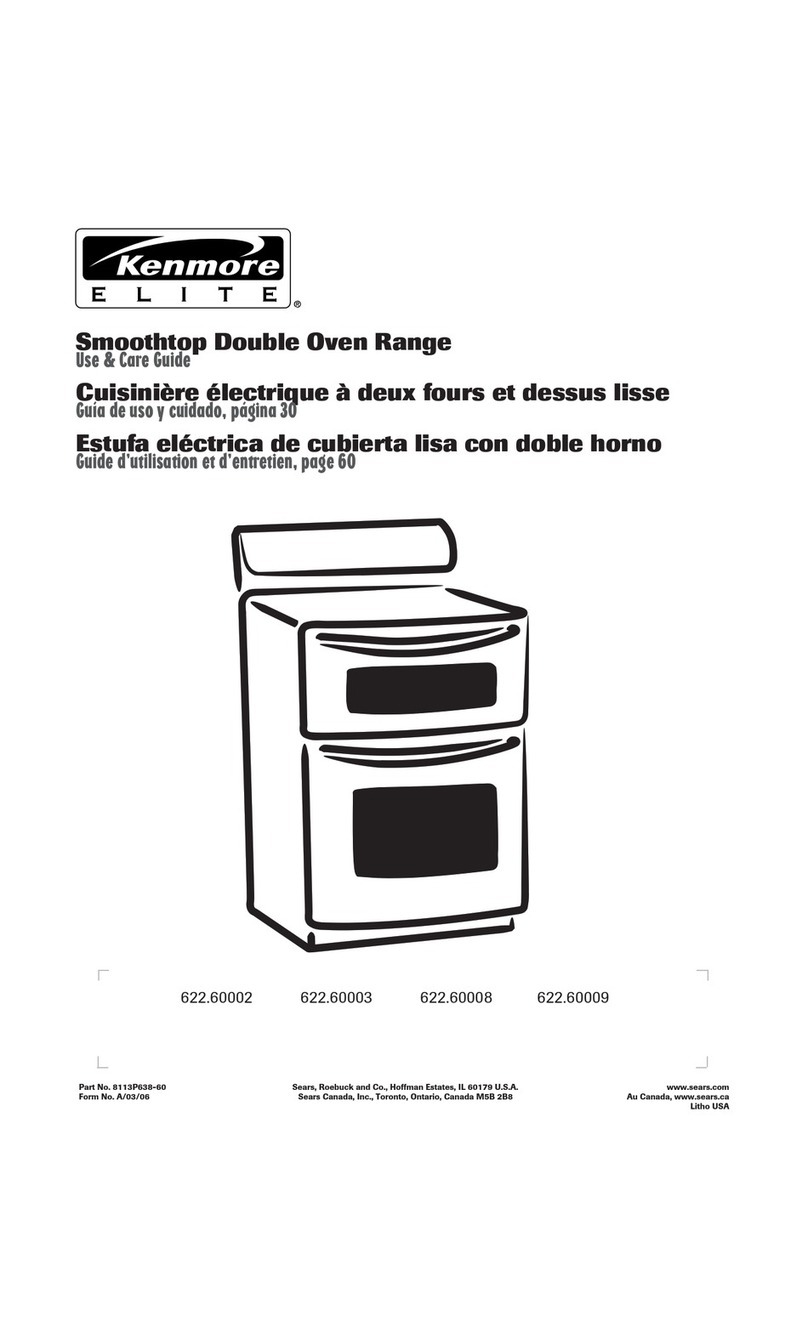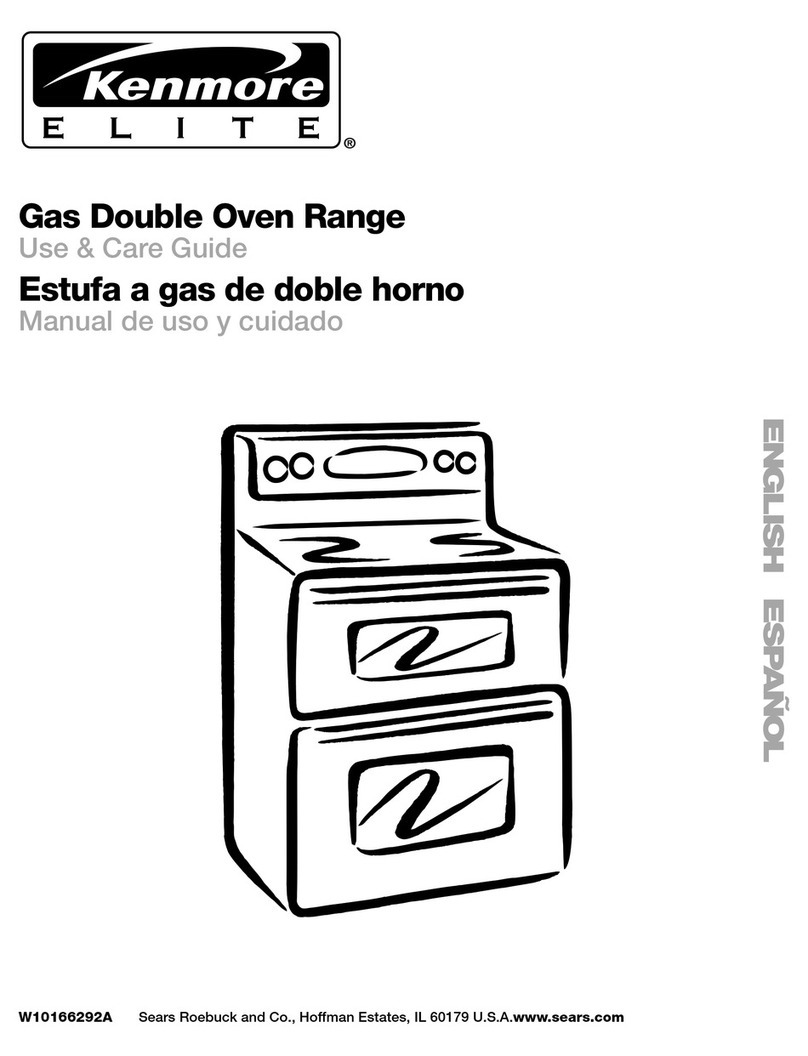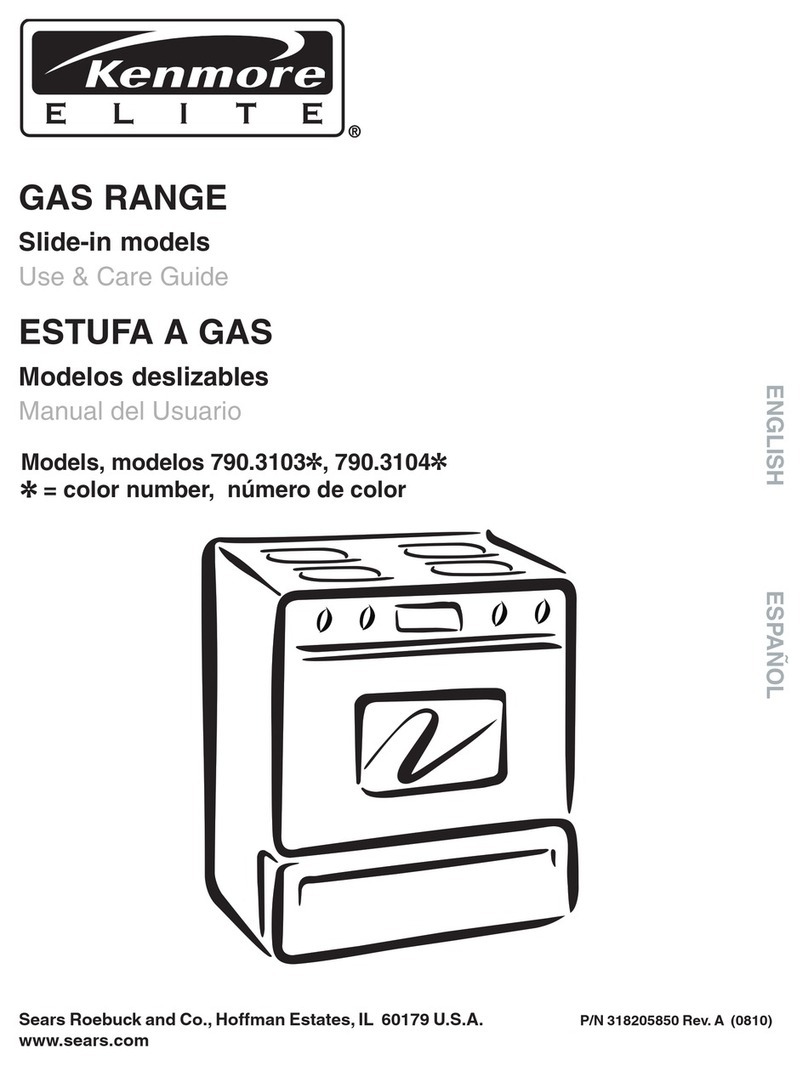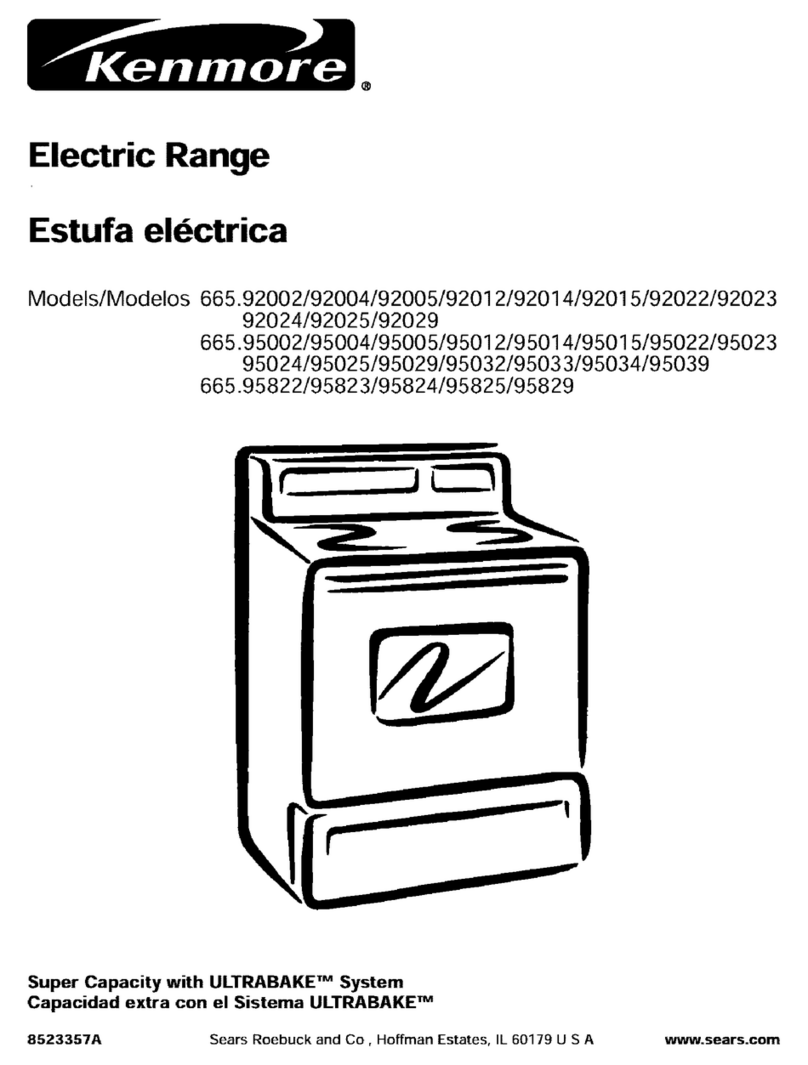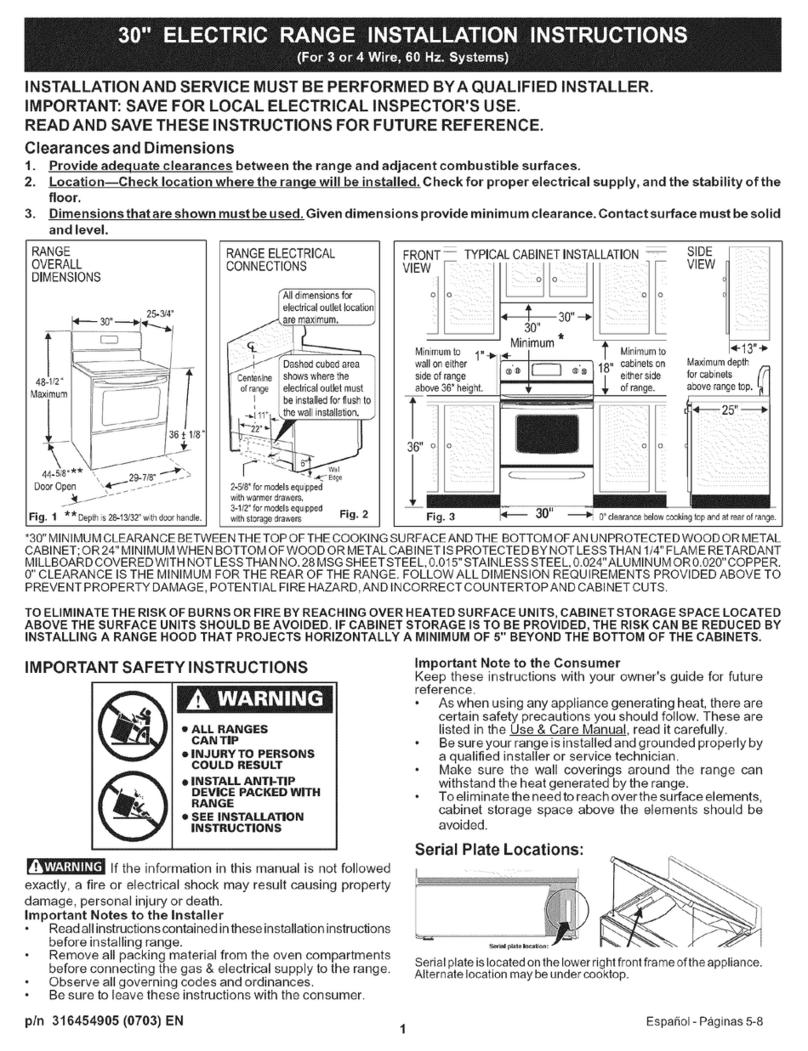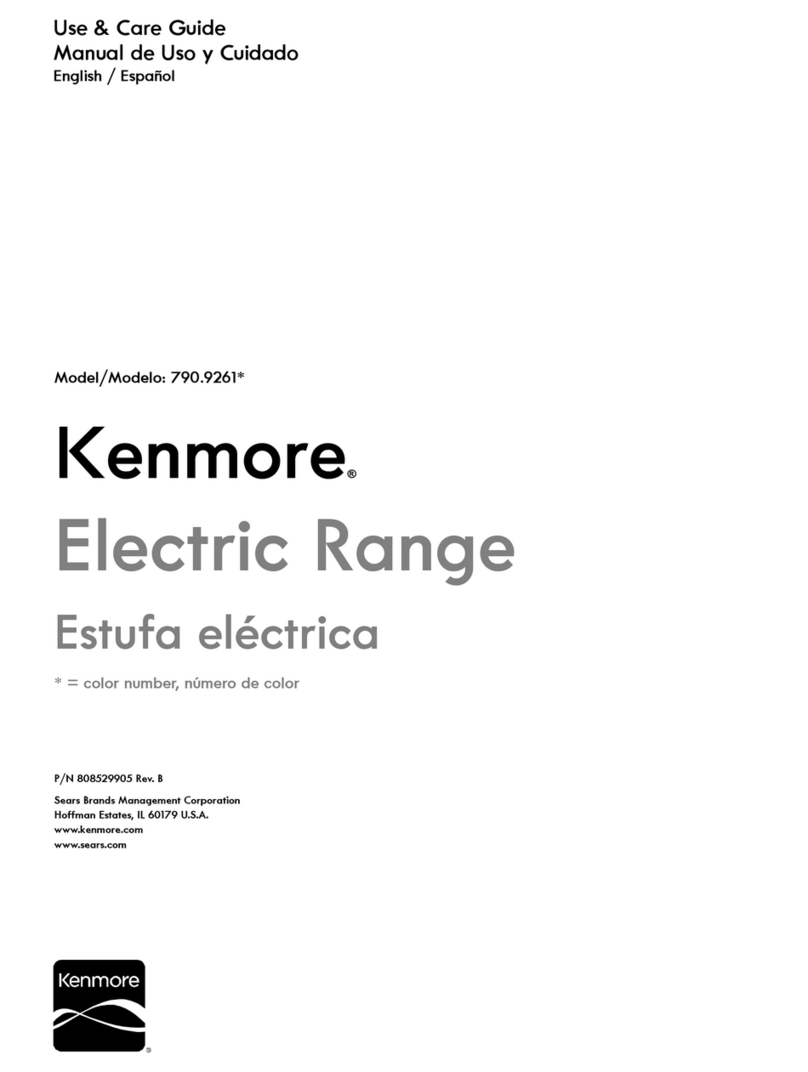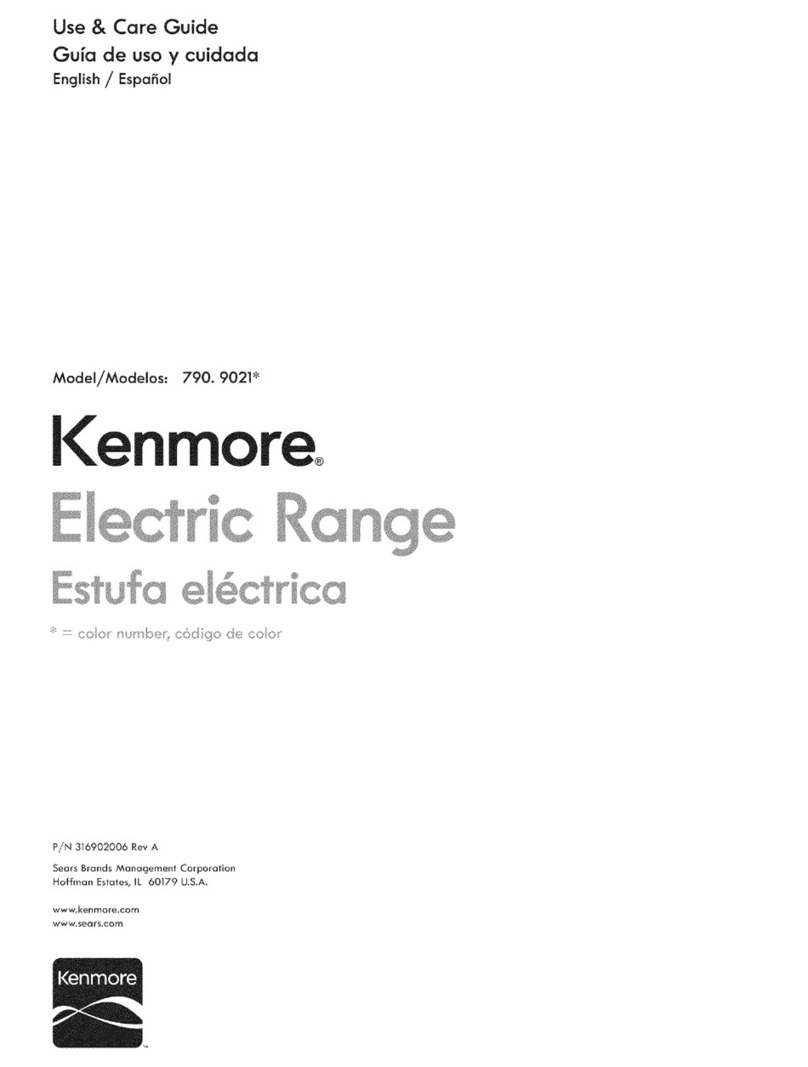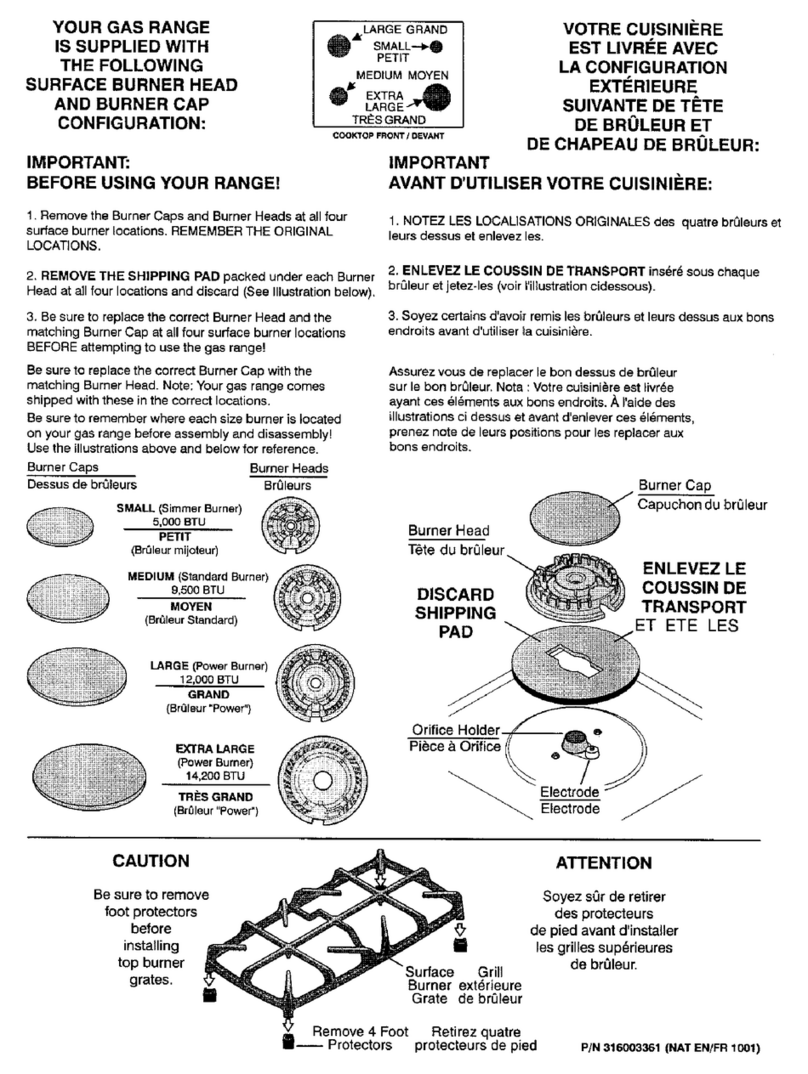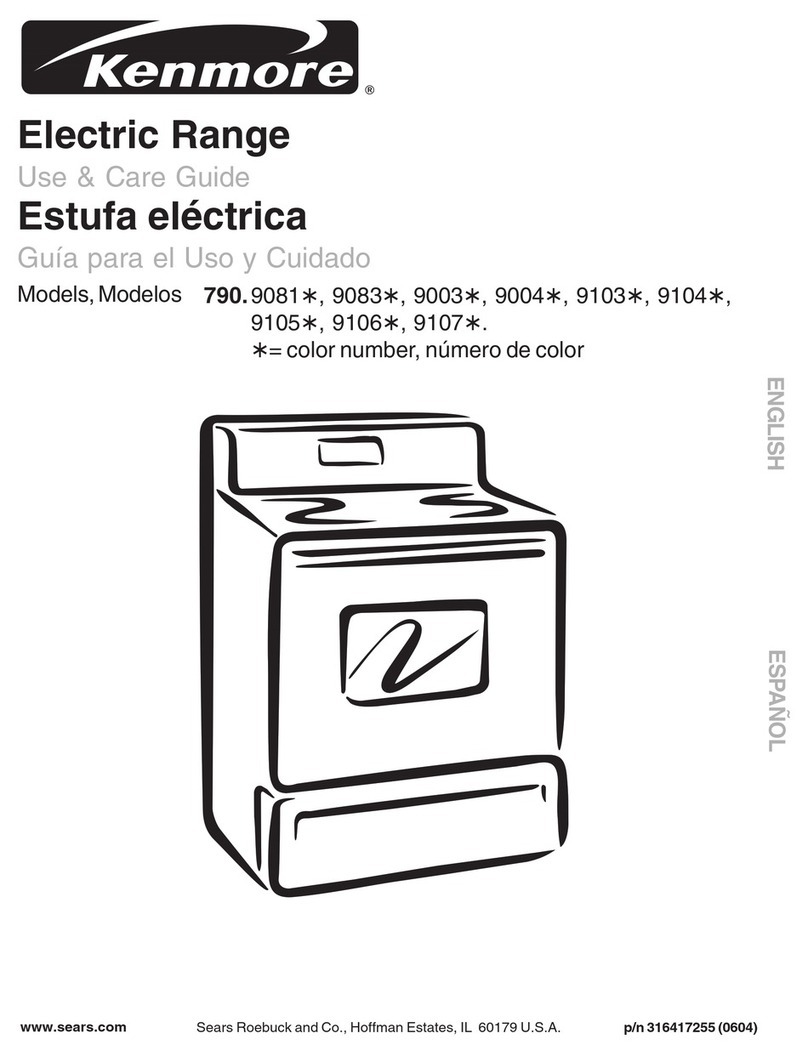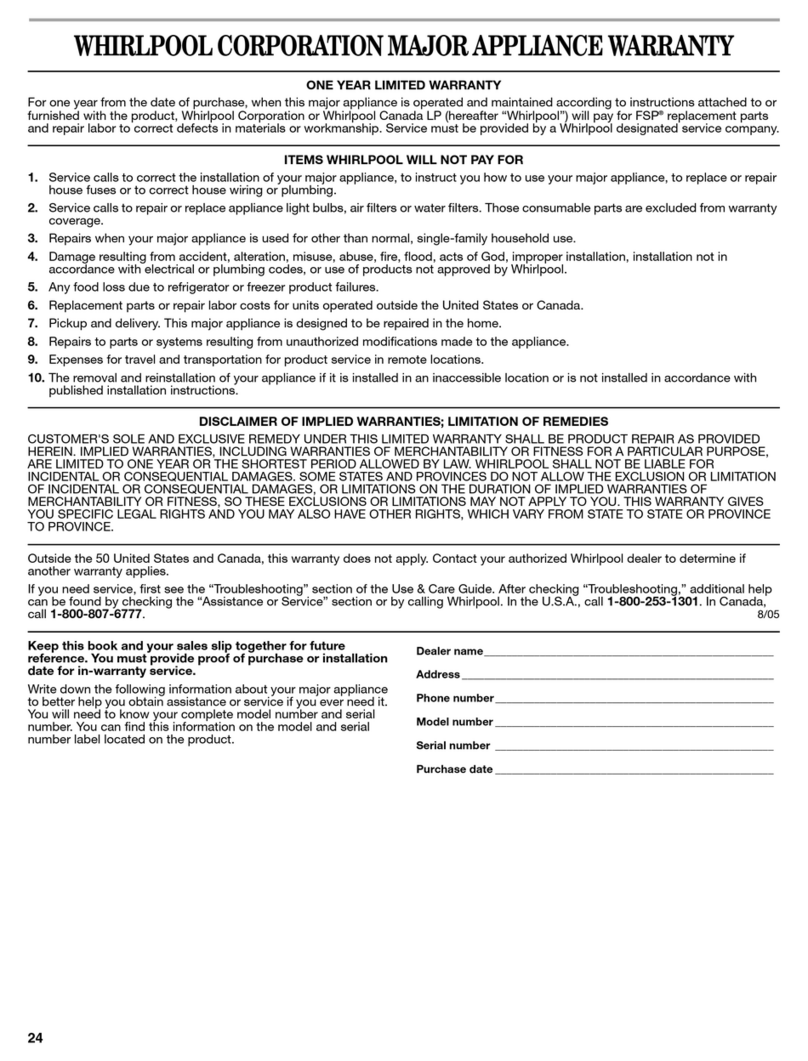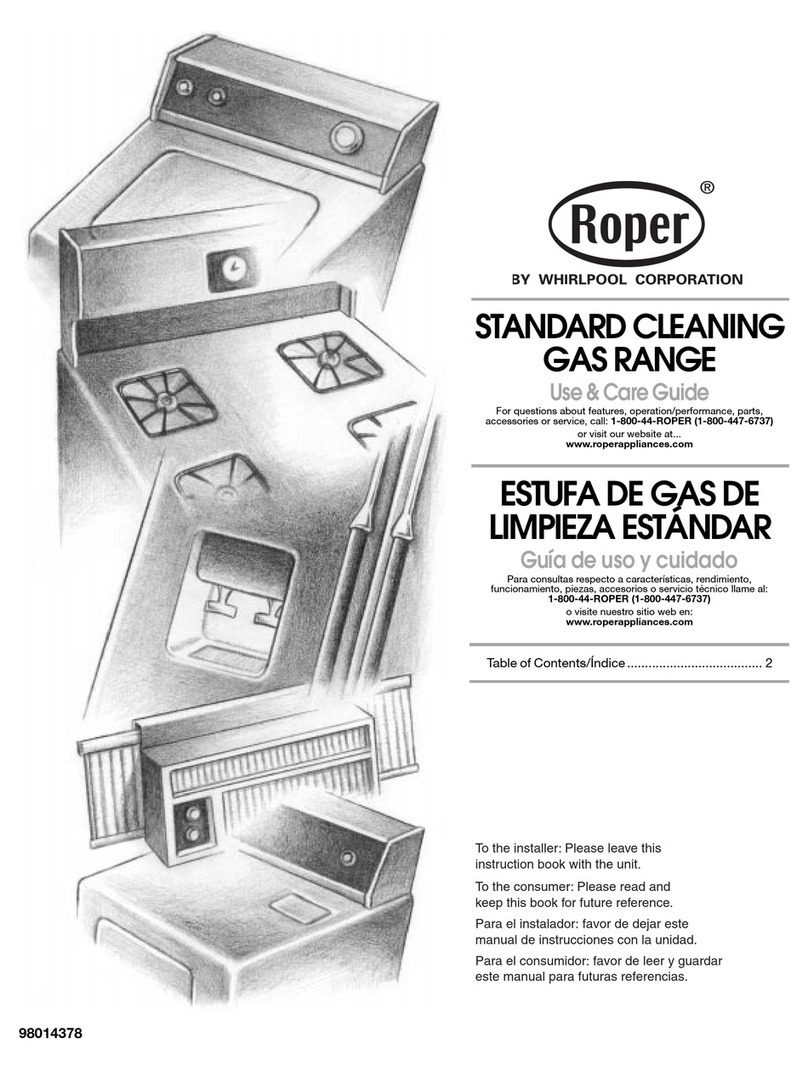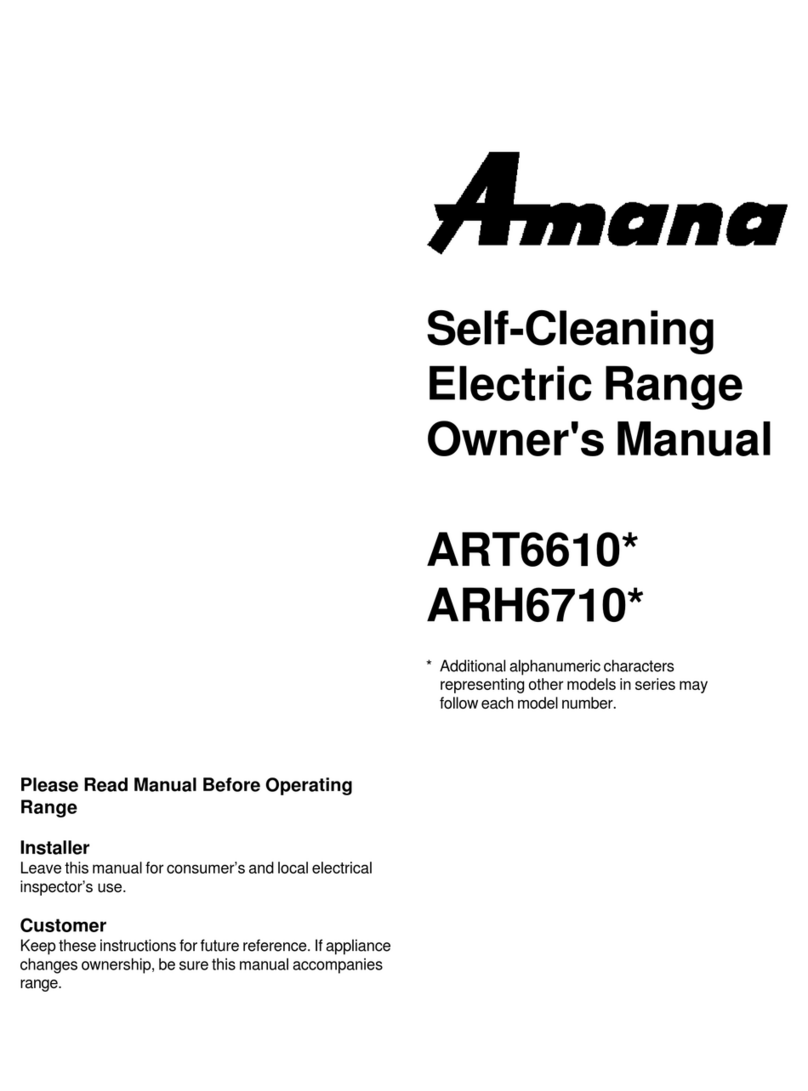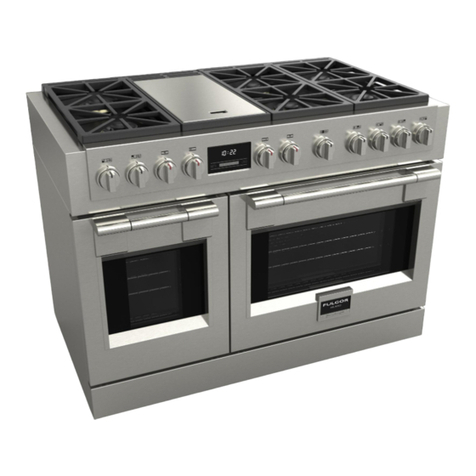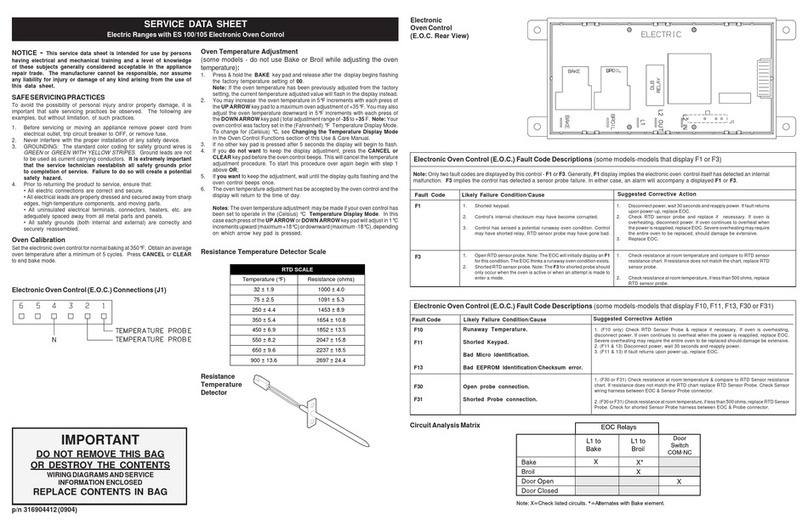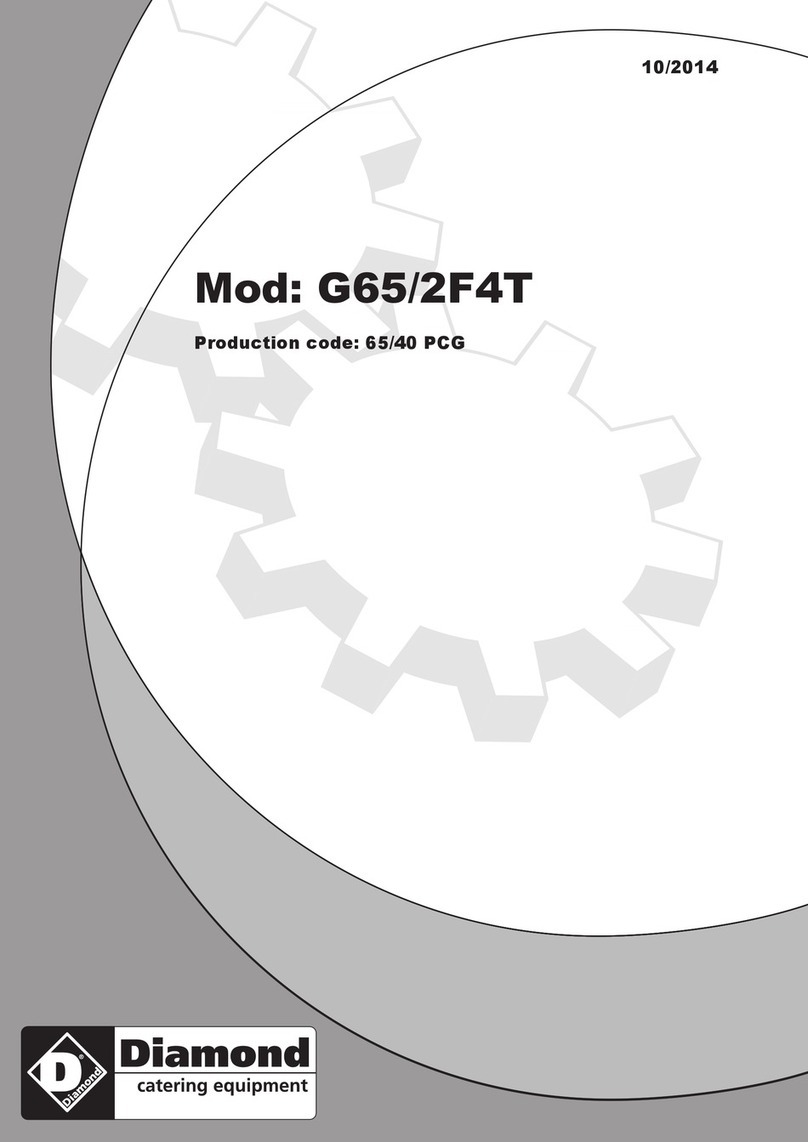
2. Convert Surface Burners for use with LP/
Propane Gas
r_P"_r_l Unlike the standard gas range, THIS COOKTOP IS
NOT REMOVABLE. Do not attempt to remove this cooktop.
Save the natural gas orifices removed from the appliance for possible
future conversions to natural gas.
For all burner locations:
a. Remove the top grate and burner cap (See Figure 6).
b. Use your hand to remove the burner head.
c. Remove the four factory installed natural gas orifices from the center
of the orifice holders using a 7 mm nutdriver (See Figure 7).
d. Replace the orifice in each of the four orifice holders with kit
supplied LP/Propane gas orifice (refer to the LP Kit chart listed on
page 1; also refer to Figures 4 and 5 for the correct LP orifice
installation at each of the four surface burner locations). Tighten
each orifice until snug. Use caution not to overtighten.
e. Replace the four burner heads (be sure burner head mates correctly
with each surface igniter) then replace the burner caps and grates.
_ Use caution when replacing each burner cap so the
electrode is not damaged.
Burner
Cap_
Inner
Locatin{
Ring
Burner
Head 7ram
Nut
Driver
Holder
/i
Do Not f_
Remove FIGURE 7
3. Convert Oven Burner Orifice for LP/Propane
Gas (16,000 BTU*)
a. Locate the oven burner spud (See Figure 8).
b. Using a 1/2" wrench, turn down the adjustable spud, which injects gas
into the oven burner, until snug against the LP/Propane metering pin
(approximately 2-1/2 turns). Do not over tighten.
4. Convert Waist-High Broiler Burner Orifice
Flame for LP/Propane Gas (13,500 BTU*)--Self-
Cleaning Models Only
a. Open the oven door.
b. Locate the broiler burner spud and turn down until snug against the
LP/Propane metering pin (approximately 2-1/2 turns). Do not over
tighten (See Figure 8).
5. Reconnect Gas and Electrical Supply to
Range.
Leak testing of the appliance shall be conducted according to the
Installation Instructions provided with the Range.
_,...........................................:i!iiiiiil;ili[iiiii(i;[ii[iiiZiiZiiiiiii(Zi
ii
Oven Burner
Orifice FIGURE 8
Checking Manifold Gas Pressure
If it should be necessary to check the manifold gas pressure, remove the
burner and connect a manometer (water gauge) or other pressure device
to the top right front burner orifice. Using a rubber hose with inside diameter
of approximately 1/4," hold tubing down tight over orifice. Turn burner
valve on. For an accurate pressure check, have at least two (2) other
surface burners burning. Be sure the gas supply (inlet) pressure is at least
one inch above specified range manifold pressure. The gas supply
pressure should never be over 14" water column. When properly adjusted
the manifold water column pressure is 10" for LP/Propane gas or 4" for
Natural gas.
__qJ_ Do not flame to check for leaks.
use a gas
a. Disconnect the range and its individual shut-off valve from the gas
supply piping system during any pressure testing of that system at
test pressures greater than 14" of water column pressure
(approximately 1/2" psig).
b. The appliance must be isolated from the gas supply piping system
by closing its individual manual shut-off valve during any pressure
testing of the gas supply piping system at test pressures equal to or
less than 14" of water column pressure (approximately 1/2" psig).
To
Surface
Burner
FIGURE 10
%
Burner Flame Size
FIGURE 9
Test to verify if "LOW" setting should be adjusted:
a. Push in and turn control to LITE until burner ignites.
b. Push in and quickly turn knob to LOWEST POSITION.
c. If burner goes out, reset control to OFF.
d. Remove the surface burner control knob.
e. Insert a thin-bladed screwdriver into the hollow valve stem and
engage the slotted screw inside. Flame size can be increased or
decreased with the turn of the screw. Turn counterclockwise to
increase flame size. Turn clockwise to decrease flame size. (See
Figures 9 and 10).
Adjust flame until you can quickly turn knob from LITE to LOWEST
POSITION without extinguishing the flame. Flame should be as small as
possible without going out.

